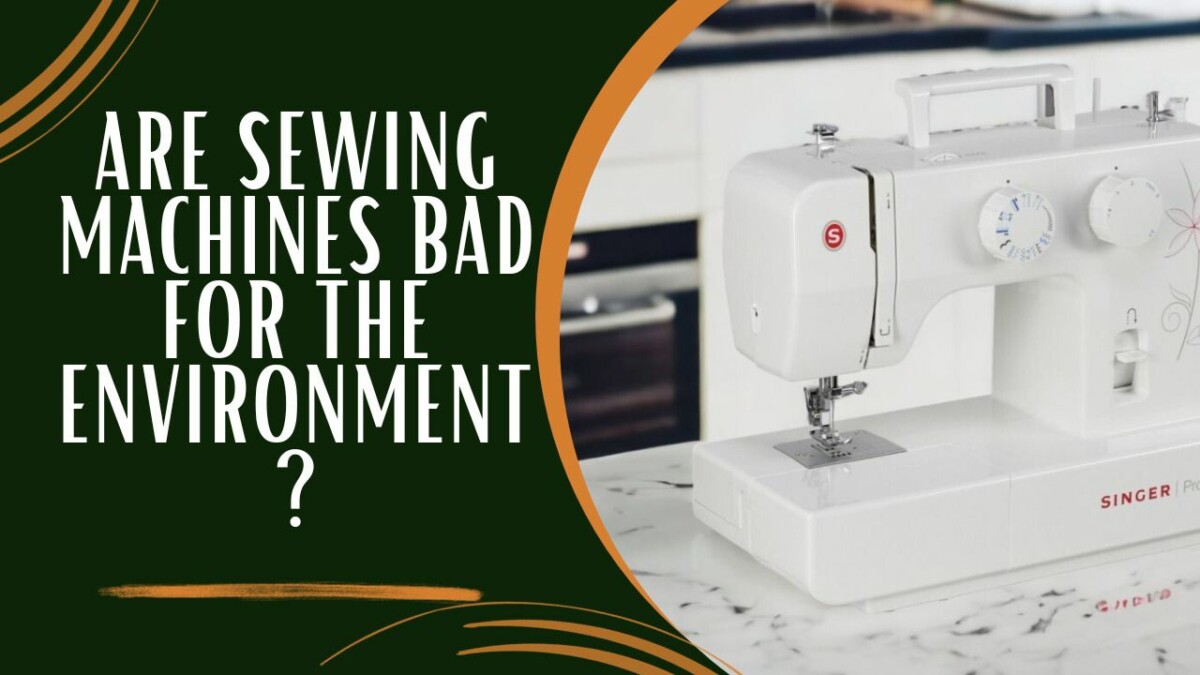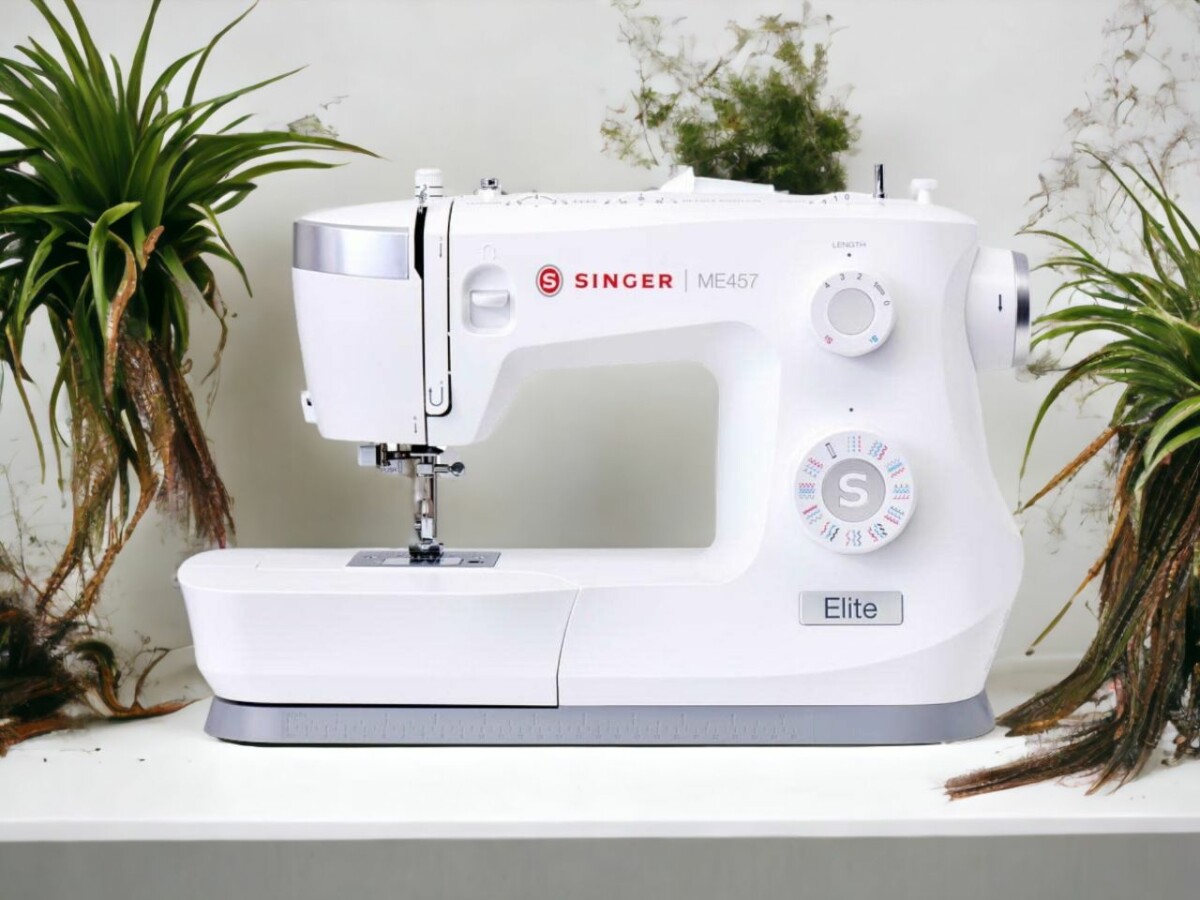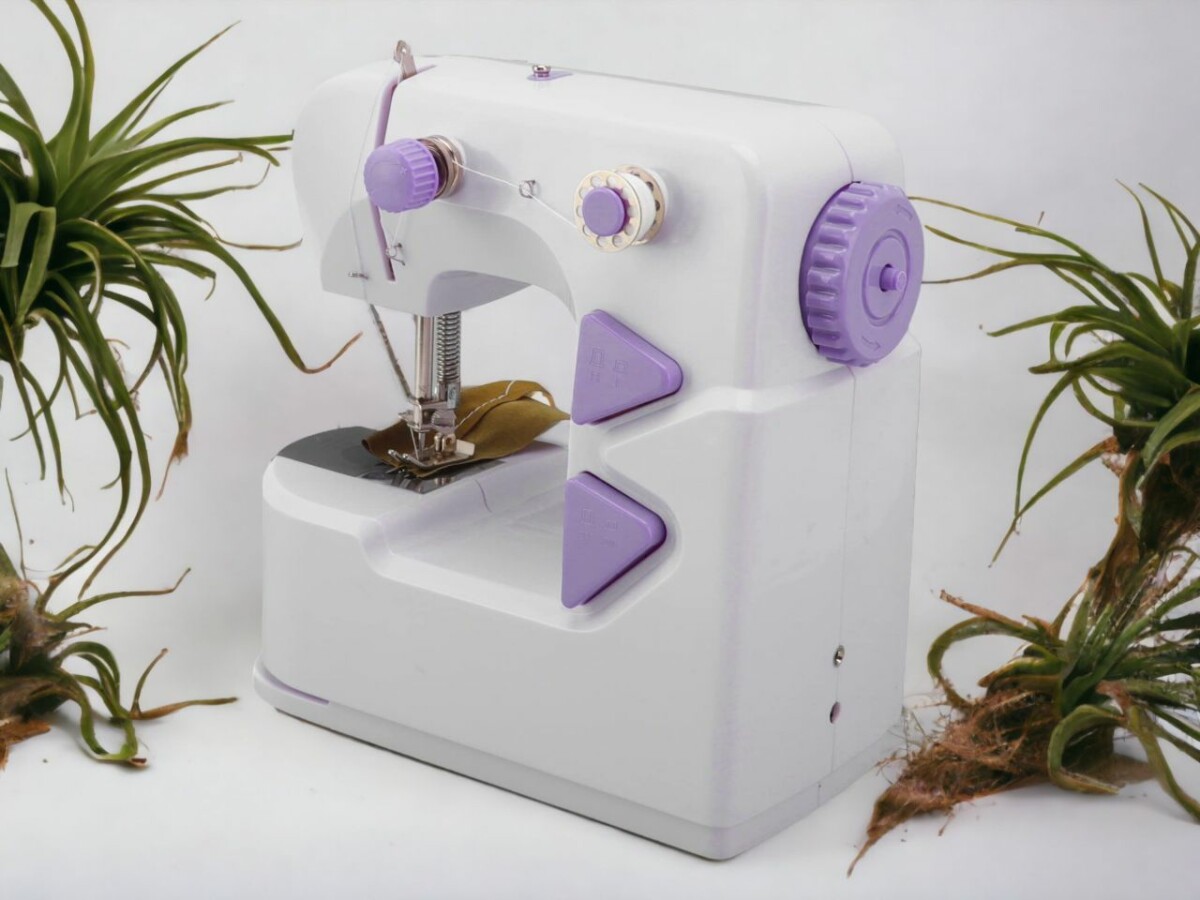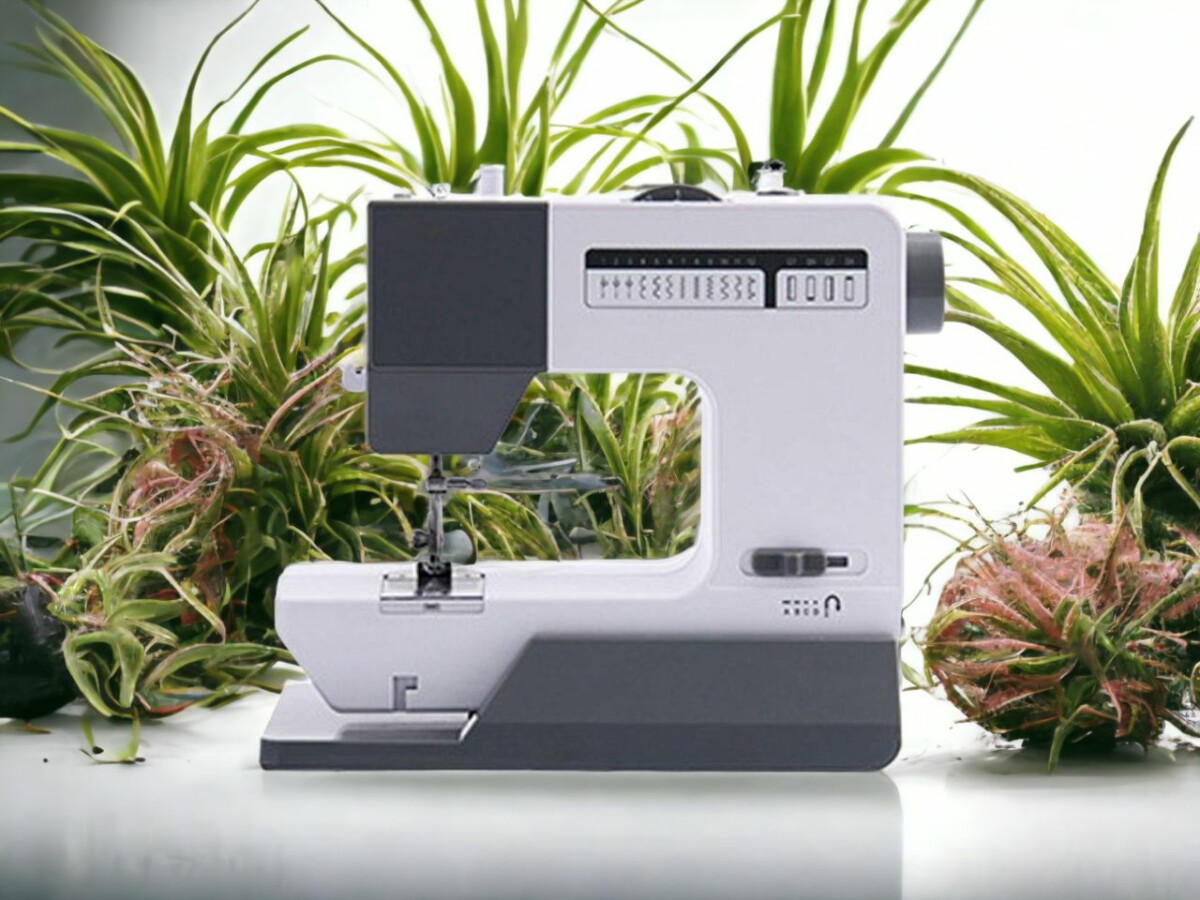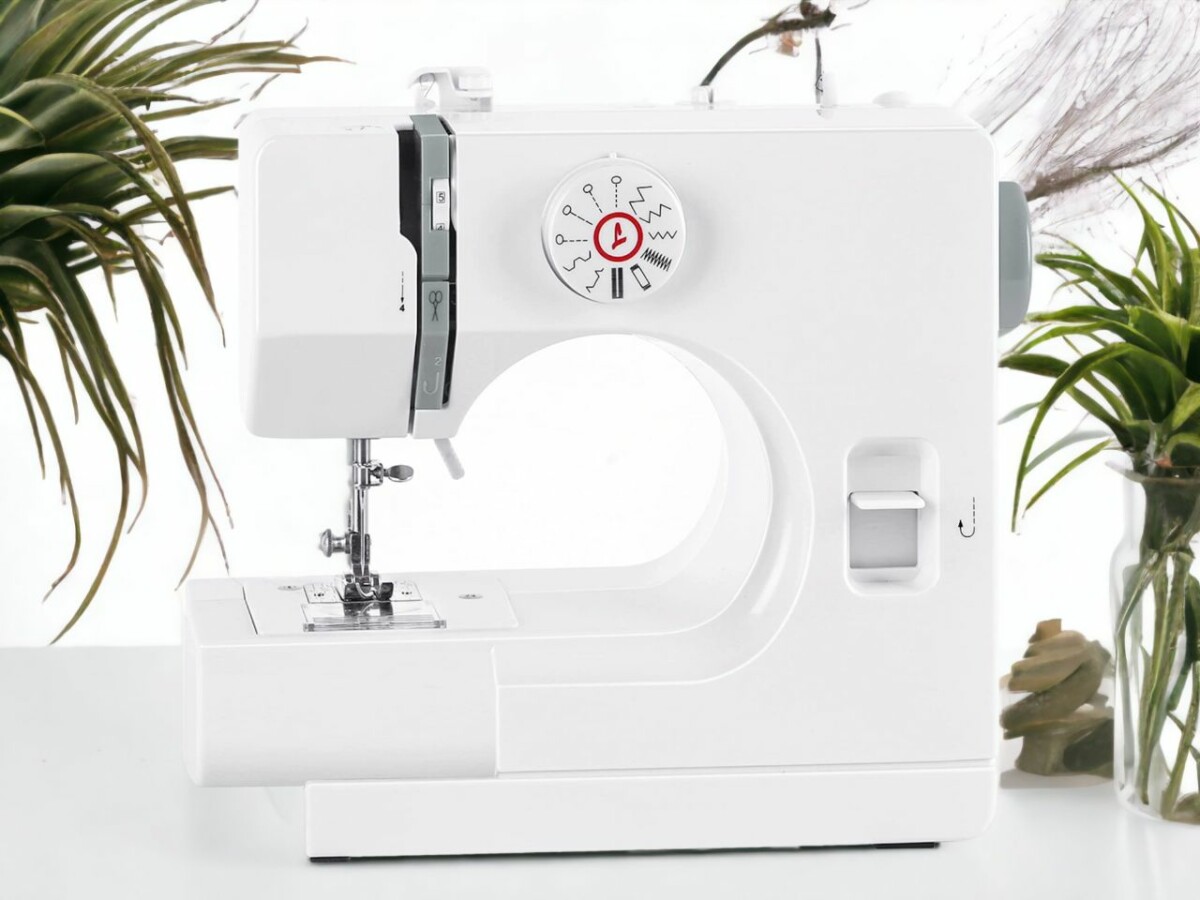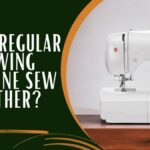So, you’re just sitting there, humming away at your sewing machine, right? But, have you ever hit the pause button and thought about what that could be doing to our planet?
Yeah, I get it, it’s a game-changer for your DIY projects, but it’s also playing a role in a much bigger issue. From the pollution created during its production to encouraging the fast fashion fad, your sewing machine might be leaving a larger carbon footprint than you’d imagine.
So, let’s dive deep into the not-so-obvious environmental toll of these machines, and explore how we can keep up with our sewing shenanigans in a more eco-friendly way.
Are Sewing Machines Environmentally Unfriendly?
Like many electronic devices, sewing machines can potentially harm the environment, particularly if not disposed of correctly. To minimize environmental impact, you can consider recycling or reusing old machines. Choosing energy-saving models or preserving and repairing existing ones to increase their life span is also a good approach.
Bet you didn’t know this, but that innocent-looking sewing machine of yours has a bigger hand in environmental pollution than you’d ever guess. The way you take care of and fix your sewing machine really matters. If you’re tossing it out instead of fixing it, you’re adding to the e-waste problem.
But hold up, you don’t have to give up your sewing hobby completely. There are greener ways to stay fashionable.
You can go old school with manual sewing techniques, like hand-sewing, knitting or crocheting. Sure, it’ll take more time, but it’s so much better for the environment. And hey, while you’re at it, why not switch to organic materials instead of synthetics? It’s all about making mindful decisions.
Greenhouse Gas Emissions From Sewing Machine Production
Alright, let’s switch up the focus a bit. Shockingly, the production of sewing machines alone contributes to an estimated 1.2 million tons of greenhouse gases every year. Yeah, you heard that right! These emissions aren’t just hot air, they’re a key player in the growing electronic waste crisis that’s seriously messing with our planet.
So, let’s break this down into four easy-to-digest points:
- Each sewing machine that pops off the production line sucks up a ton of energy. This isn’t just about the bills, it’s about the massive carbon footprint it leaves behind.
- What’s more, these machines are often packed with plastics and polymers. When they’ve sewn their last stitch, they usually end up as e-waste, contributing to the trash mountain in our landfills.
- The sew-sew situation gets even worse when you consider the demand for these machines. More sewing machines mean more textile production, which in turn pumps up the volume on carbon emissions.
- Lastly, let’s not forget the role these machines play in the fast fashion industry. The more we crave the latest trends, the more these machines work overtime, escalating their environmental impact.
The Impact of Plastics and Polymers in Sewing Machines
Just about every sewing machine you’ll bump into is loaded with a hefty dose of plastics and polymers. Sure, these materials help keep the machines wallet-friendly, but they also play a big part in the escalating issue of electronic waste.
Plastics are everywhere in sewing machines, from the shell and the dials to the guts of the machine itself. And when you’re finished with your trusted sewing companion, it’s not as easy as just tossing it in the trash.
Getting rid of sewing machine waste is no walk in the park. A lot of the parts are tricky to recycle due to the hodgepodge of materials used. Just think about it – with millions of these machines being chucked every year, they’re piling onto the growing heap of electronic waste, seeping nasty chemicals into our earth and waterways.
The Link Between Sewing Machines and Clothing Waste
Thanks to the rise in sewing machines, we’re churning out clothes at an unprecedented rate, and let’s be real, that’s leading to a huge surge in the amount of clothing waste. So, what’s the link?
- Sewing Machine Popularity: It’s simple math, guys. More sewing machines equals more clothes. It’s like how fast fashion has us tossing out last season’s styles before they’ve barely seen the light of day.
- Textile Trash: Our old threads end up clogging landfills because who really thinks about recycling or reusing textiles, right?
- Fixing Sewing Machines: When your machine goes on the fritz, remember it’s not about the quick fix. Getting it repaired is a greener choice, plus it helps keep e-waste down.
- Sustainability: By choosing to repair your machines and reuse fabrics, you’re doing your part for the planet, helping reduce waste, and supporting a circular economy.
The effect of sewing machine repair on sustainability and its role in cutting down textile waste is major. If used thoughtfully, sewing machines can be part of the solution instead of adding to the problem.
Environmental Consequences of Increased Fabric Demand
So, you might’ve noticed that with each new sewing machine comes an increased demand for fabric, right? Well, this upward trend isn’t all rosy, it’s got a pretty gnarly environmental downside. Consider this: growing fibers, particularly cotton, could potentially mess with our groundwater – thanks to the heavy use of pesticides.
And that’s not all. The process of turning those fibers into the fabrics we love involves dyeing and treating them, which often requires some seriously nasty chemicals. This, in turn, leads to further pollution. Not exactly cool, right?
Now, let’s talk about what happens when you’re in the zone with your sewing machine, whipping up new outfits left and right. The sad truth is that the more clothes we make, the more textile waste ends up in our landfills. A lot of these textiles won’t break down for ages, which means they’re causing long-term harm to our environment.
How Sewing Machines Promote Consumerism and Fast Fashion
In the fast-paced realm of fashion, it’s easy to overlook the power a humble sewing machine holds in driving our consumer habits. It’s the secret weapon behind the fashion industry’s ability to constantly pump out fresh trends at breakneck speed.
Sewing machines are the unsung heroes that amp up the production game, allowing brands to constantly refresh their collections and keep us on our toes.
This speedy fashion turnover often leads us into a buying frenzy, where we can’t help but snap up the latest trends more frequently than we’d like to admit.
Thanks to the cost-effective production made possible by sewing machines, we’re inundated with affordable clothing options. This, in turn, feeds into our culture of disposability where we toss out old clothes without a second thought.
And this cycle? It just makes the demand for sewing machines skyrocket, throwing us into a never-ending loop.
Closure: Weaving Environmental Responsiveness into Your Sewing Practices
So, that was a hefty dose of insight on the environment and sewing machines. But let’s dive even deeper and touch base on a couple of other things that you, as a diligent seamstress or tailor, might wonder about. When it comes to sewing canvas, there are some things to consider. Is it possible? Absolutely. Can every sewing machine do that? Hmmm, not so sure. If you’re all about sustainable materials, using canvas is usually a pretty good bet, but you’ve got to have the right gear to handle it. And guess what, we sorted out everything for you.
Oh, what’s that? You prefer sewing vinyl over canvas? Sure thing, but remember to double-check whether your machine can handle that. If not, don’t fret! Thankfully, there are tons of options out there. But like always, we need to think of our dear planet, so go for recycled vinyl when possible, yeah? Treat your sewing machine and mother nature nicely.
Maybe you’ve got all of these sorted out, and your worries revolve around, say, carrying a sewing machine on a plane? No need to worry, mate. We’ve got you covered. Whether you’re setting off for a stitching retreat or moving across the state or country, it’s not that baffling to take your sewing companion along. Read on to know more about that too.
Remember to make sewing a fun activity, but don’t forget about being responsible too. Our planet is the hotshot here. Treat it right, and it’ll surely return the favour. Keep on sewing, champs!
Sewing is definitely one of my biggest hobbies. I’ve been doing it since i was young, thanks to my mother. I specialize in sewing, and that’s what i mostly write about.

